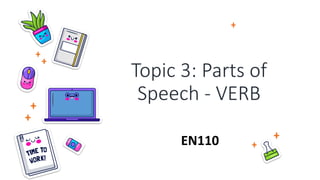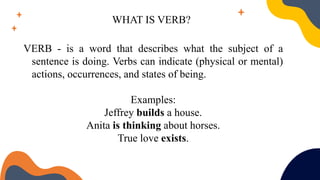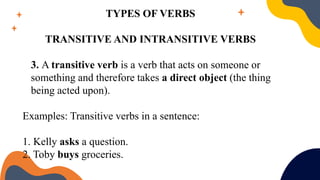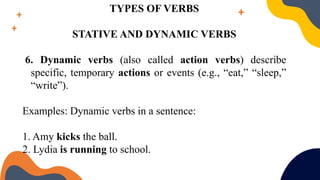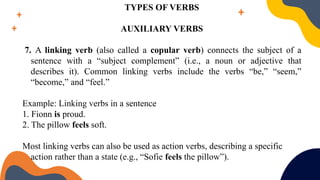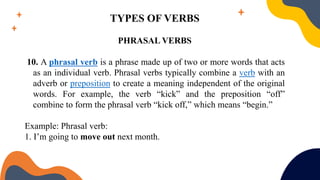1. A verb describes an action, occurrence, or state of being and is one of the main parts of speech. Verbs can be regular or irregular, transitive or intransitive, stative or dynamic, auxiliary, phrasal, or gerunds.
2. Verbs are conjugated by tense including past, present, and future tenses which each have simple, progressive, perfect, and perfect progressive aspects.
3. Regular verbs form their past and past participles by adding "-ed" while irregular verbs have unpredictable forms. Transitive verbs act on a direct object while intransitive verbs do not. Stative verbs describe states of being while dynamic verbs describe actions.
